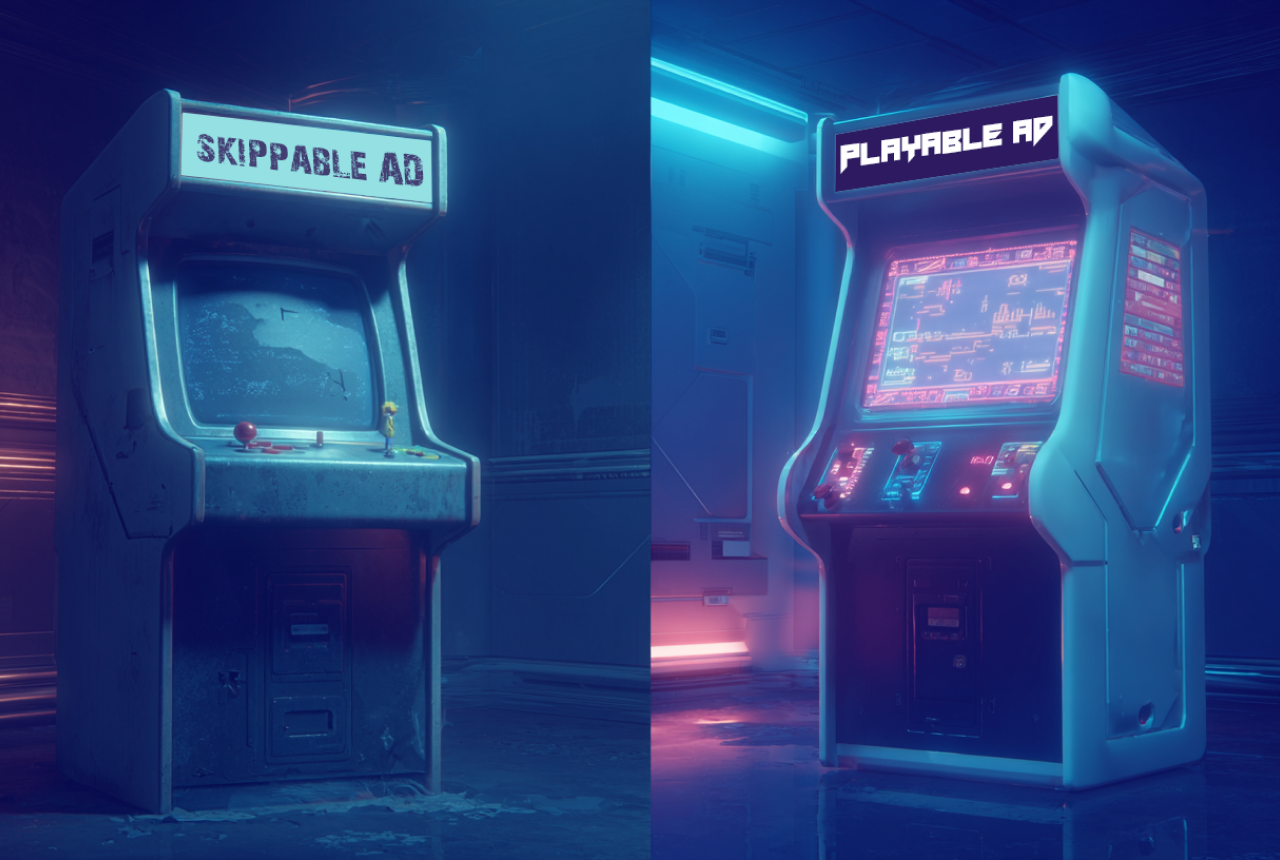In-Game Advertising
Debunking Gamer Stereotypes: Brands Guide to Game Advertising

Gone are the days of stereotypical teenage gamers huddled in basements. Today's gaming audience is incredibly diverse, spanning all ages and genders, which offers advertisers a wealth of untapped potential for brands.
In this article we unpack the top myths about game audiences and reveal the surprising truths that make gaming a goldmine for advertisers.
Discover how you can harness the power of this ever-evolving industry to create memorable and effective campaigns.
It's time to reimagine gaming and unlock the true potential of a rapidly growing and engaged audience.
Top Myths About Gamers That Brands Need To Know
Myth 1: Gaming is only for teenage boys
Contrary to popular belief, gaming is no longer limited to teenage boys. The gaming landscape has evolved significantly, with a diverse audience that enjoys various games.
In fact, a survey by the Entertainment Software Association reveals that nearly 50% of game audiences are female.
Additionally, Statista shows that over 60% of adults and 70% of children under 18 play video games.
Players from all age groups, including those over 65, actively engage in gaming, making it an attractive market for brands across the board.

Myth 2: Gaming makes people violent
Another common myth about games is that some instill aggressive thoughts in players. While some games do feature violence, research shows no long-term link between violent games and aggressive behavior.
According to an article but Cognitiontoday, violent games do have the ability to desensitize players towards violence, this is no different ot violence in other forms of media.
Additionally, the drivers of violent behavior can often be attributed to external factors within someone’s life, not necessarily games. It has also been proven that players can differentiate between game and read world violence despite long-term game play.
The gaming landscape has evolved, with a wide range of genres available, including puzzles, sports, simulations, and casual games, ensuring there's something for everyone.
Myth 3: Gaming Ad Campaigns are Hard to Measure
Measuring gaming ad campaign success isn't as challenging as it seems. Thanks to advancements in advertising and gaming technology, advertisers can easily track and report analytics.
They can use various metrics and tools to optimize campaigns based on player behavior. While it may require a different approach compared to traditional platforms, it's not necessarily more difficult.
For example, iion offers brands tailored solutions to reach their target audience demographic with scale and accuracy using multiple data sources.
This leads to better viewability, user retention, and measurable growth. Advertisers can choose from in-game, over-game, or off-game campaigns to reach their audience effectively.
Myth 4: Gamers Spend Money to Remove Ads
Many advertisers believe that a large chunk of gaming audiences spend money to play games ad-free. However, this is simply not the case; many gamers are happy to put up with a certain level of ads in exchange for a free-to-play experience.
Many prefer the option to either have ads to play for free or pay for no ads but giving your audience the option is key.
Choosing the right format is vital when it comes to an ad-based experience. For instance, rewarded ads work best in F2P games, where users view ads in return for rewards in the form of in-game currencies, additional lives, and other power-ups.

Myth 5: Game Advertising is Only for Game-Related Brands
Many advertisers believe that only brands related to gaming, such as computer hardware, gaming peripherals, or even other games, can succeed with game advertising.
However, as previously mentioned the changing industry has led to a more diverse audience. This provides an equal opportunity for both gaming and non-gaming brands to reach their target audience.
Moreover, the belief that games are unsafe brand environments has also been debunked. Games are safe for brands, as most of the content is game-generated and rarely user-generated.
This is not just speculation since we have seen non-gaming brands achieve stellar results with gaming-focused ads.
Good example of this is how Nike tapped into League of Legends with professional player Uzi from China. The Camp Next Level 2020 campaign was designed to sharpen minds, build stronger bodies and make better gamers.
Similarly, luxury brand Ralph Lauren partnered with G2’s League of Legends star Rekkles, where the player was seen switching out his competition gear for Ralph Lauren’s blazer and slim-fit jeans. Moreover, the ad overlapped with other athletes as well, which was a part of the brand’s Wimbledon marketing.
The list goes on with brands such as Gucci, Marvel, Bumble, Sephora, and L'Occitane, who have formulated and executed exceptional campaigns within the gaming ecosystem.
Myth 6: Gaming Audiences Are Serious
Contrary to the stereotype of serious, antisocial gamers portrayed in movies and TV shows, the gaming community is made up of audiences with different preferences that enjoy games in their own unique ways:
Here’s a brief outline of the top gaming audiences:
- Casual Gamers: These players enjoy games for fun without the pressure of becoming professionals. They might not play every day, and they don't aim to achieve high scores. Casual gamers can be anyone, from your bus seatmate to your neighbor.
- Midcore Gamers: These gamers are somewhat serious about gaming as they strive to improve their skills and achieve better results. Although not necessarily pursuing professional gaming, they typically play games daily.
- Hardcore Gamers: The most committed gamers who treat gaming as a lifestyle. They use high-end peripherals and are deeply involved in the gaming ecosystem, with a serious and dedicated approach to their favorite games. That being said they are still individuals with interests outside of gaming.
Understanding this diverse audience can help brands target gamers more effectively and capitalize on the potential this market offers.
Myth 7: Limited Game Advertising Strategies
Games, much like any other audience-centric channel, offer a variety of ways brands can engage with the audience. While console or PC games offer a higher degree of immersion, mobile games can have amplified reach.
The opportunities are endless and at the fingertips of advertisers.
iion empowers brands to connect with their target audience in-game, providing an engaging experience that leads to better brand recall and conversions.
With ads displayed around the game interface, brands can achieve increased visibility and results. Thanks to iion, brands can explore the world of gaming advertising with simplicity and finesse.
Why Brands Need to Target Game Audiences
The changing landscape of the gaming ecosystem has made it extremely lucrative for brands. With its highly engaged players and growing trends, the industry has experienced immense growth.
Millions of game audiences watch, and interact with their favorite games daily, providing advertisers with a unique opportunity to reach a targeted audience. By connecting with gamer audiences who spend hours on screens, brands increase their chances of being noticed and remembered.
Another reason why advertisers should reach out to gaming audiences is that they are often more receptive to advertising.
Many players are used to seeing game advertisements and are more open to learning about new products and services through game advertising.
This is especially true for mobile and free-to-play games, which often rely on advertising revenue to support their development and operation.
Brands should future-proof their businesses by considering the diverse audiences game advertising provides access to or risk being left behind.
iion helps brands and advertisers connect with a highly engaging gaming audience and build memorable ad experiences.
Brands can get access to 300+ gaming sites and applications with iion and target the gaming audience across a variety of touchpoints both inside and outside the games. Iion helps brands to launch engaging campaigns that boost brand recognition and loyalty.
Want to know how you can target a highly engaging gaming audience? Connect With Us Today!
FAQs
- Who is the audience for gaming?
Who isn’t? Everyone is playing video games these days, including 5-year-old kids and 90-year-old grandparents. The growth of the gaming ecosystem has made everyone an audience for gaming, each with their own genre of game to play. - Does gaming cause anger issues?
Even though there have been some instances where prolonged exposure to violent games resulted in players being immune to a certain degree of violence in real-life, multiple studies have concluded that video games do not result in violence. - What are the top non-gaming brands that have opted for game-based ad campaigns?
There are hundreds of non-gaming brands that have executed game-based ad campaigns and achieved stellar results. Some of the top brands include Gucci, Nike, Ralph Lauren, and Bumble, but the list goes on and is still growing. - What are the 3 types of gamers?
The 3 types of gamers are casual games, midcore games, and hardcore games. Casual games audiences play for fun without getting too serious, midcore games use high-end peripherals and play regularly, and hardcore game audiences consider gaming their lifestyle and often play for hours. - What are the best game ad formats?
There is no single ‘best’ game ad format, and it all comes down to the ad strategy. However, gamers prefer non-intrusive ad formats, such as rewarded ads, over intrusive ad formats, such as interstitial ads. Moreover, audiences tend to prefer ads to be placed in natural transition points rather than being called abruptly.









.webp)















